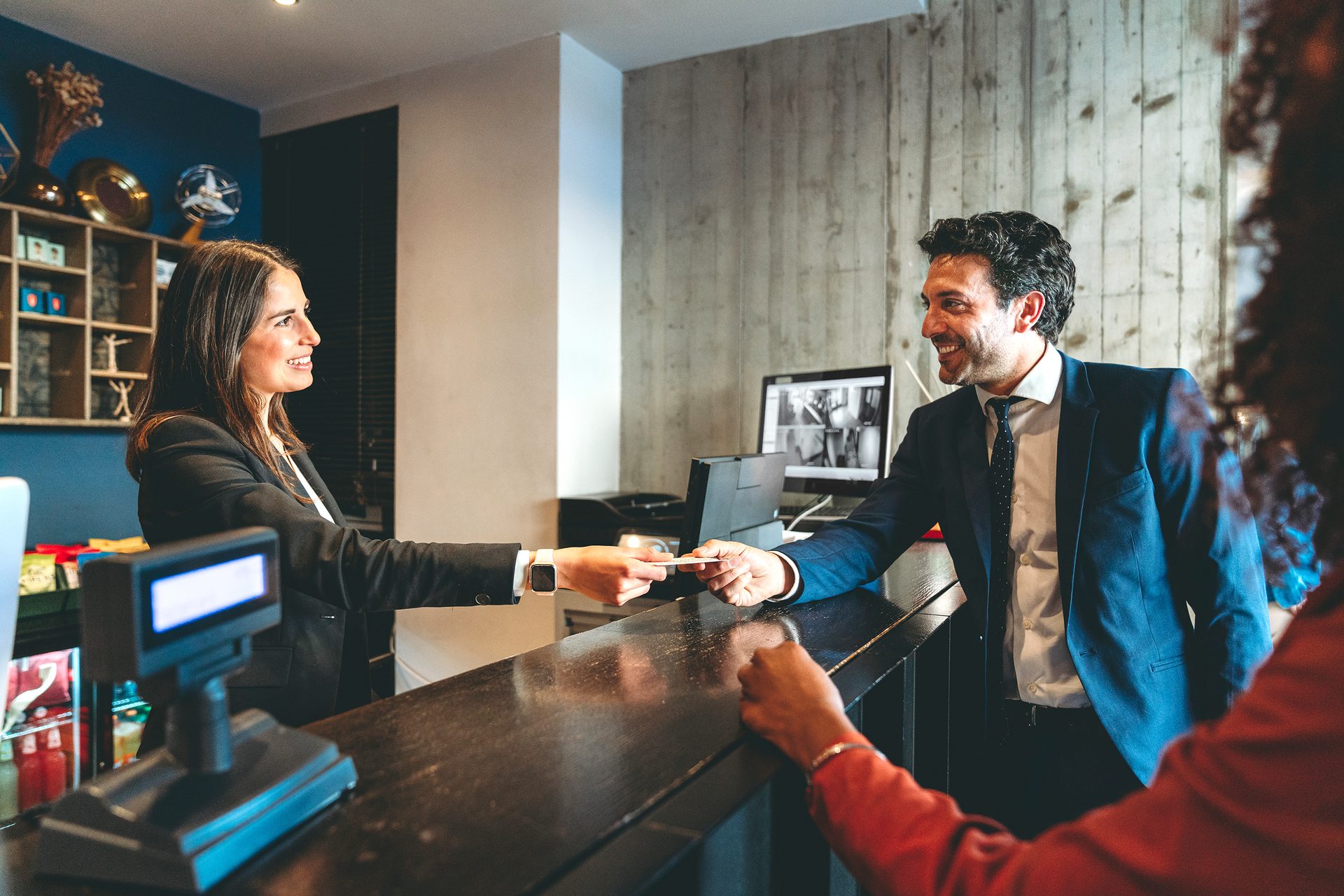february 2023

Education & Training
By Madeline Lauver
Editor in Chief

Navigating Today’s Hotel Security Challenges
As the hospitality sector adjusts to the new normal of post-COVID travel, security leaders reflect on their priorities moving forward.

FilippoBacci / E+ via Getty Images
Nearly three years ago, COVID-19 emerged and drastically changed the threat landscape across the world. When the virus began to spread, hotel security teams responded by implementing enhanced cleaning protocols; opening up rooms to house people experiencing homelessness in safer environments than shelters; and shutting down high-risk facilities, such as spas and fitness centers, before the first COVID-19 vaccinations were developed.
As the hospitality industry navigated changing threat levels and regulations regarding COVID-19, organizations also faced the challenge of significant decreases in business and leisure travel. A number of facilities experienced travel losses of up to 90%, and risk professionals around the globe expect business travel recovery to take between one to three years.
Now, hotels and motels are moving forward into the era of leisure and business travel upticks. Taking the lessons they learned during the height of the COVID-19 pandemic into today’s threat landscape has helped hospitality security leaders stay agile in the face of modern security challenges.
Priorities for Hospitality Security in 2023
Security magazine spoke with hotel security leaders to determine where their priorities lie as the industry propels into the new normal. Security professionals named these focuses as critical to enterprise security in their organizations:
- Surveillance Technology
- Loss Prevention
- Communication
- Executive Protection
- Event Planning
Event planning and high-profile hotel visits may have slowed for facilities during 2020 and 2021, but security leaders are now back to ensuring the safety of event attendees and VIP guests. Surveillance, loss prevention efforts and communication have remained critical over the past years.
Overt vs. Covert Security at Hotels
The careful balance of overt and covert security plays an important role in hospitality security. At the Grand Hotel on Mackinac Island, the security team maintains an overt and customer service-oriented presence. “The guests need to feel safe and know that we are here for them,” says Doug Alexander, Director of Security and Loss Prevention at the Grand Hotel. “At the same time, they should be able to relax and enjoy their vacation, and not have security threats on their mind.”
At the Grand Hotel, the security team uses their uniform — a professional suit and small badge — as a way to remain visible, yet approachable. The team utilizes a combination of video surveillance and patrols to ensure guests remain safe during their stay.
“The guests need to feel safe and know that we are here for them. At the same time, they should be able to relax and enjoy their vacation, and not have security threats on their mind.”
— Doug Alexander

Hwee-Fong Yong, Safety Manager at Marina Bay Sands, a luxury hotel in Singapore, agrees that uniforms play a part in maintaining the balance of overt vs. covert security in hospitality spaces. “Where budget allows, having a team of security personnel in plain clothes will help on the covert security side,” she says. Yong also stresses the importance of communication with internal and external stakeholders to maintain a safe hotel environment. “To strike a balance between covert and overt security is to build up the security knowledge across departments such that they can act as the extended arm for the security department,” she says. Creating a security-minded culture both within the hotel facility and with community partners helps keep everyone safe, she says.
On the technology side, surveillance is a key tool for hotel security leaders to extend the reach of their teams and ensure safety at their facilities. “The most important technology you can have in a hotel is your audio and video systems,” Alexander says. At the Grand Hotel, security teams use surveillance and RFID tags while conducting patrols, responding to incidents, and assessing the safety of the facility.
Hotel security teams can rely on surveillance to boost safety across their facilities, especially in areas where security officers don’t patrol as frequently. Technology can also extend the reach of hotel security departments, which may face workforce shortages and retention issues, according to Yong. In situations where security officer patrols are unavailable or ill-suited to a location, “the use of robots to conduct roving patrols can be a relief to manpower shortages,” Yong says. The technology can also bridge the gap between an incident and the security response, she says, by “quickly detecting unusual activities at high-risk locations and triggering a response to the location instead of the need for a command center operator to dispatch responders,” she says.
Moving Forward Safely
Hotel security leaders have responded in innovative ways to the challenges affecting the sector in recent years. Looking forward, security leaders can look to risk assessment and communication techniques to further bolster their security posture. “To boost your physical defenses, conduct a threat vulnerability risk assessment every few years and review if the existing posture needs enhancements,” Yong says. “Do a cost-benefit analysis and present a business case to the C-suite, weighing out the pros and cons for a few options,” she says.
Alexander sees communicating with business leaders as a security priority as well. “The biggest thing is communication with your administration, as well as with your staff, guests and other security professionals,” he says. “It’s important to always communicate with your peers and keep your mind open for education.”

february 2023 / SECURITYMAGAZINE.COM



